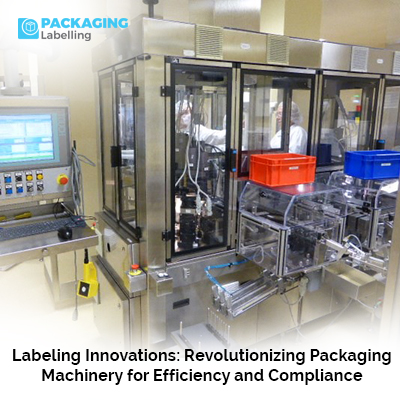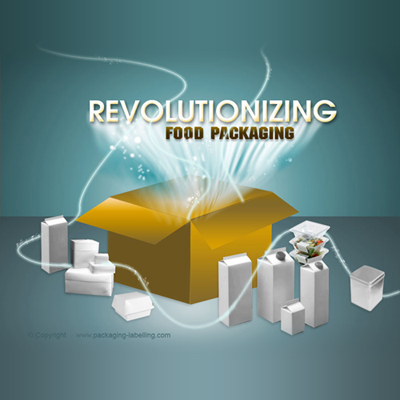Labeling Innovations: Revolutionizing Packaging Machinery for Efficiency and Compliance

In today's dynamic and competitive market, packaging plays a crucial role in not only protecting products but also in conveying essential information to consumers. Labeling, in particular, has undergone significant innovations, revolutionizing packaging machinery for enhanced efficiency and regulatory compliance. This article delves into the advancements in labeling technologies, their impact on packaging machinery, and how they contribute to efficiency and compliance in the industry.
I. Evolution of Labeling Technologies
Traditional Labeling Methods
In the past, labeling products involved manual processes where workers applied paper labels by hand. This method was labor-intensive, time-consuming, and prone to errors such as misalignment or wrinkling of labels. It also limited the speed and efficiency of production lines, leading to increased costs and lower productivity.
Introduction of Automated Labeling
The introduction of automated labeling systems revolutionized the industry by replacing manual labor with efficient machines. Automated label applicators and printers significantly improved labeling accuracy and speed, leading to higher productivity and reduced operational costs. These machines can handle various label types, including pressure-sensitive labels, wrap-around labels, and shrink sleeves, providing versatility for different packaging requirements.
RFID and Smart Labels
RFID (Radio-Frequency Identification) and smart labels represent a major advancement in labeling technologies. RFID tags embedded in labels contain unique identifiers that can be tracked wirelessly throughout the supply chain. This technology enables real-time inventory tracking, reduces theft and counterfeiting, improves supply chain visibility, and enhances overall logistics and inventory management processes.
Digital Printing
Digital printing technologies, such as inkjet and laser printing, have transformed label printing by offering high-resolution graphics, variable data printing, and on-demand label production. Digital printing eliminates the need for printing plates, allowing for cost-effective short runs and customization of labels. It also facilitates quick changes to label designs and enables brands to incorporate variable information like barcodes, QR codes, and promotional messages efficiently.
II. Impact on Packaging Machinery
Integration with Packaging Lines
Modern labeling machines are designed to seamlessly integrate into packaging lines, ensuring smooth and continuous operations. Integration eliminates bottlenecks and reduces downtime by synchronizing labeling processes with other packaging activities such as filling, capping, and sealing. This integration optimizes production efficiency, minimizes manual handling, and improves overall line throughput.
Precision and Accuracy
Advanced labeling systems employ precision mechanisms and sensors to ensure accurate label placement on products. These machines can handle various packaging formats, including bottles, cans, jars, pouches, and cartons, with consistent label positioning and orientation. Precision labeling is crucial for maintaining brand image, complying with labeling regulations, and enhancing product presentation on retail shelves.
High-Speed Labeling
High-speed labeling machines are capable of labeling thousands of products per hour, making them ideal for high-volume production environments. These machines utilize advanced labeling technologies such as servo-driven applicators, rotary systems, and multi-head labelers to achieve high throughput while maintaining labeling accuracy. High-speed labeling reduces production lead times, increases output capacity, and improves overall manufacturing efficiency.
Compliance and Traceability
Labeling innovations contribute significantly to regulatory compliance and product traceability. Modern labeling systems are equipped with features such as automatic barcode verification, date coding, lot numbering, and serialization, ensuring adherence to labeling standards and regulations. Accurate and compliant labeling enables efficient recall management, product authentication, and regulatory reporting, enhancing consumer safety and trust in the brand.
III. Key Innovations in Labeling Machinery
Automatic Label Applicators
Automatic label applicators are designed to apply labels to products accurately and efficiently. These machines use various methods such as pressure-sensitive, blow-on, tamp-on, or wipe-on applicators depending on the label type and product characteristics. Automatic label applicators can handle labels of different sizes, shapes, and materials, making them versatile for a wide range of packaging applications.
Print and Apply Systems
Print and apply systems combine label printing and application in a single integrated machine. These systems can print variable data such as barcodes, expiration dates, batch numbers, and pricing information on labels in real-time. Print and apply systems ensure accurate labeling, reduce label inventory costs, and support traceability requirements in industries such as food, pharmaceuticals, and logistics.
RFID Labeling Solutions
RFID labeling solutions integrate RFID tags into labels, enabling automated tracking and tracing of products throughout the supply chain. RFID tags store unique product identifiers, batch numbers, and other data that can be read wirelessly using RFID readers. RFID labeling enhances inventory visibility, reduces manual tracking errors, improves stock accuracy, and enables real-time asset management and anti-counterfeiting measures.
Vision Inspection Systems
Vision inspection systems integrated into labeling machines perform real-time quality checks of labels and products. These systems use cameras, sensors, and image processing algorithms to detect label defects, verify label placement, ensure barcode readability, and inspect product packaging integrity. Vision inspection systems eliminate labeling errors, reduce waste, and enhance overall product quality and compliance with regulatory requirements.
IV. Benefits of Labeling Innovations
Enhanced Efficiency
Labeling innovations streamline production processes, reduce manual intervention, and increase throughput, leading to higher overall efficiency and cost savings. Automated labeling systems minimize downtime, optimize resource utilization, and improve production line performance, resulting in enhanced operational efficiency and competitiveness in the market.
Improved Productivity
High-speed labeling machines and automated systems significantly increase productivity by labeling products at a faster rate without compromising accuracy or quality. Improved productivity translates to higher output volumes, shorter production cycles, faster time-to-market, and better utilization of workforce and equipment resources.
Regulatory Compliance
Advanced labeling technologies ensure compliance with labeling regulations, such as ingredient lists, nutritional information, allergen warnings, and country-specific labeling requirements. Accurate and compliant labeling reduces the risk of regulatory fines, product recalls, and consumer complaints, maintaining brand reputation and market credibility.
Brand Integrity
Precise and consistent labeling enhances brand integrity by presenting products professionally and accurately reflecting brand identity and values. Well-designed labels with high-quality graphics, clear messaging, and informative content contribute to positive customer perception, brand recognition, and loyalty, driving sales and market share growth.
V. Challenges and Future Trends
Integration Complexity
Integrating advanced labeling machinery with existing packaging lines can be challenging due to compatibility issues, space constraints, and technical expertise requirements. Manufacturers need to invest in skilled personnel, training programs, and system integration solutions to overcome integration complexities and ensure seamless operation of labeling systems within the production environment.
Cost Considerations
While labeling innovations offer numerous benefits, initial investment costs and ongoing maintenance expenses should be carefully evaluated. Manufacturers need to conduct cost-benefit analyses, assess return on investment (ROI), and consider long-term sustainability factors when implementing labeling technologies. Cost-effective solutions, leasing options, and flexible financing arrangements may help mitigate upfront investment challenges.
Sustainability
Future trends in labeling machinery focus on sustainability, with developments in eco-friendly label materials, energy-efficient machines, and recyclable packaging solutions. Manufacturers are adopting environmentally friendly practices, reducing packaging waste, optimizing resource usage, and meeting consumer demand for sustainable packaging options. Sustainable labeling solutions contribute to environmental stewardship, regulatory compliance, and brand differentiation in the market.
Artificial Intelligence (AI) and Machine Learning
AI and machine learning technologies are expected to play a significant role in labeling machinery, optimizing label placement, detecting defects, and enhancing overall labeling processes. AI-driven algorithms analyze labeling data, identify patterns, predict equipment performance, and automate decision-making processes. Machine learning models improve labeling accuracy, reduce errors, and support continuous improvement initiatives in manufacturing operations.
Conclusion:
In conclusion, labeling innovations have transformed packaging machinery, driving efficiency, compliance, and product integrity in the industry. Manufacturers must embrace these innovations, address integration challenges, invest in sustainable practices, and leverage AI-driven solutions to stay competitive, meet regulatory requirements, and deliver high-quality products to consumers.









